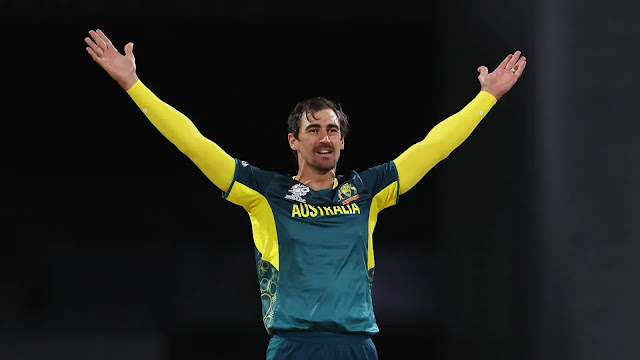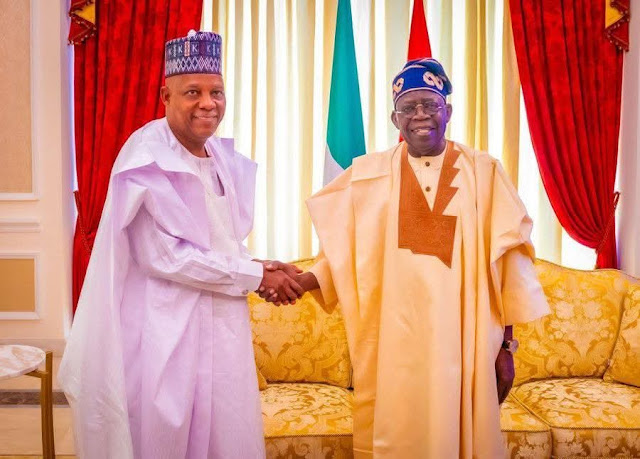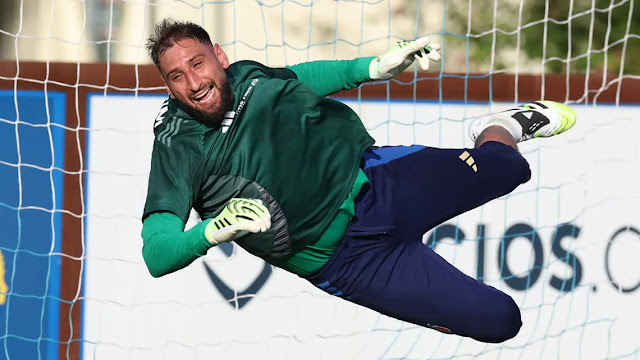On September 1, 2025, Australian fast bowler Mitchell Starc announced his retirement from T20 International (T20I) cricket, marking the end of an illustrious chapter in his international career. The 35-year-old left-arm pacer, widely regarded as one of Australia’s finest bowlers across formats, cited his desire to prioritize Test and One-Day International (ODI) cricket, as well as his commitments to franchise leagues, as the primary reasons for his decision. The announcement, made via a press release from Cricket Australia and reported by SuperSport on September 2, 2025, has sparked widespread discussion about Starc’s legacy, the future of Australia’s T20I team, and the broader dynamics of modern cricket, where players increasingly balance international duties with lucrative franchise opportunities.
Starc’s retirement from T20Is, a format in which he played 58 matches, took 73 wickets, and contributed to Australia’s 2021 T20 World Cup triumph, comes at a time when the global cricket landscape is undergoing significant transformation. With franchise leagues like the Indian Premier League (IPL) and Big Bash League (BBL) commanding substantial financial and scheduling influence, Starc’s decision reflects broader trends among elite players navigating career longevity and workload management. This article delves into the details of Starc’s retirement, explores its significance for Australian cricket, and situates the event within the evolving context of international cricket. It offers a critical analysis of the sport’s socio-economic dynamics, player welfare, and the challenges facing national teams, while proposing policy recommendations to ensure sustainable growth for cricket globally.
Details of Mitchell Starc’s Retirement
Mitchell Starc’s retirement from T20I cricket was formally announced through a statement released by Cricket Australia on September 1, 2025. “After much consideration, I’ve decided to step away from T20 International cricket to focus on Test and ODI formats, as well as my commitments in franchise cricket,” Starc said. “Representing Australia in T20Is has been a privilege, and I’m incredibly proud of what we achieved, particularly the 2021 T20 World Cup. However, at this stage of my career, I want to prioritize the formats where I feel I can make the biggest impact for Australia.”
The announcement came as Australia prepares for a packed international schedule, including a five-Test tour of India in early 2026 and the 2026-27 Ashes series at home. Starc, who has taken 374 wickets in 92 Tests and 115 wickets in 85 ODIs, emphasized his commitment to red-ball cricket, where he remains a linchpin of Australia’s bowling attack alongside Pat Cummins and Josh Hazlewood. His decision also reflects a strategic move to manage his workload, given his history of injuries and the physical demands of fast bowling across formats.
Cricket Australia’s chief selector, George Bailey, praised Starc’s contributions to T20Is, noting his pivotal role in the 2021 T20 World Cup, where he took 11 wickets, including crucial performances in the semi-final and final. “Mitchell has been a world-class performer in T20Is, and his decision allows us to plan for the future while giving him the opportunity to focus on Test and ODI cricket,” Bailey said. “We respect his choice and look forward to his continued impact in the longer formats.”
Starc’s T20I career statistics—73 wickets at an average of 22.91 and an economy rate of 7.64 in 58 matches—underscore his effectiveness in the format. His best figures of 4/20 came against Sri Lanka in 2016, and his ability to swing the new ball and deliver pinpoint yorkers in the death overs made him a formidable presence. However, his limited participation in recent T20Is, with only five appearances since 2022, signaled a shift in priorities, particularly as he balanced commitments with the Kolkata Knight Riders (KKR) in the IPL, where he earned AUD$2.98 million in 2024 and won the title.
Fan reactions on X were mixed, with some praising Starc’s legacy, while others expressed disappointment. “Starc stepping away from T20Is is smart for his longevity, but Australia’s bowling attack will miss him,” one user posted. Another wrote, “Franchise cricket is killing international T20s—Starc’s just the latest casualty.”
Background: Starc’s Career and Legacy
Mitchell Starc’s journey to becoming one of Australia’s cricketing greats provides critical context for his retirement decision. Born on January 30, 1990, in Sydney, Starc debuted for Australia in 2010 against India in an ODI, quickly establishing himself as a left-arm pace bowler with raw speed and swing. His Test debut followed in 2011, and by 2015, he was a key figure in Australia’s World Cup-winning ODI team, earning the Player of the Tournament award with 22 wickets.
In Test cricket, Starc’s 374 wickets place him among Australia’s all-time greats, with standout performances like his 6/50 against South Africa in 2016 and 7/97 in the 2019 Ashes. His ability to generate late swing and bowl at speeds exceeding 145 km/h has made him a feared opponent. In ODIs, his 115 wickets include a record-breaking 5/26 against New Zealand in 2015, while his T20I contributions, though less frequent, were pivotal in Australia’s 2021 triumph.
Starc’s career has not been without challenges. Injuries, including ankle and back issues, have occasionally sidelined him, prompting careful workload management. His decision to prioritize franchise cricket, particularly the IPL, has drawn criticism from some Australian fans who view international duty as paramount. However, his success with KKR, where he was named Player of the Tournament in 2024, highlights his value in the T20 market.
Starc’s retirement from T20Is follows a trend among Australian players, with David Warner retiring from all international cricket in 2024 and Steve Smith focusing on Tests. His decision aligns with a broader shift in cricket, where players like Ben Stokes and Joe Root have also prioritized certain formats to extend their careers.
Strategic Motivations for Starc’s Retirement
Starc’s decision to retire from T20I cricket is driven by several strategic considerations:
Workload Management: At 35, with a history of injuries, Starc aims to preserve his physical condition for Test cricket, which he considers his primary legacy, and ODIs, where Australia targets the 2027 World Cup.
Franchise Commitments: The IPL and BBL offer lucrative contracts and less demanding schedules than international T20Is, allowing Starc to balance earnings with career longevity. His AUD$2.98 million KKR deal underscores the financial incentive.
Format Prioritization: Starc’s effectiveness in Tests and ODIs, where his swing and pace are most impactful, makes focusing on these formats a logical choice. The 2026-27 Ashes and 2027 ODI World Cup are key targets.
Team Transition: Australia’s T20I squad is undergoing a generational shift, with young bowlers like Xavier Bartlett and Spencer Johnson emerging. Starc’s exit allows Cricket Australia to blood new talent ahead of the 2026 T20 World Cup.
Personal Legacy: By stepping away from T20Is, Starc aims to cement his legacy as one of Australia’s greatest Test bowlers, potentially surpassing Glenn McGrath’s 563 wickets.
Implications for Australian Cricket
Starc’s retirement has significant implications for Australia’s T20I team and broader cricketing landscape:
Bowling Depth: Australia’s T20I attack, led by Cummins, Hazlewood, and Adam Zampa, loses Starc’s experience and new-ball prowess. Emerging bowlers must step up to fill the void.
Team Transition: With Warner retired and Glenn Maxwell nearing the end of his career, Australia’s T20I squad faces a rebuild. Young players like Jake Fraser-McGurk and Bartlett will benefit from increased opportunities.
World Cup Preparations: The 2026 T20 World Cup in India and Sri Lanka is a key target. Starc’s absence may accelerate the integration of new players, though it risks short-term instability.
Fan and Media Reaction: X posts reflect mixed sentiments, with some fans praising Starc’s decision to prioritize Tests, while others lament the loss of a T20I star. “Starc’s focus on Tests is right for Australia, but T20Is will feel his absence,” one user noted.
Leadership Dynamics: Starc’s exit may shift leadership responsibilities, with Cummins likely to take a more prominent role in mentoring young bowlers.
Implications for Starc’s Career
For Starc, the retirement opens new opportunities and challenges:
Test and ODI Focus: Prioritizing Tests and ODIs positions Starc to chase milestones, such as 400 Test wickets, and lead Australia in high-stakes series like the 2026 India tour.
Franchise Cricket: Continued participation in the IPL and BBL ensures financial security and global exposure, with KKR likely to retain him for 2026.
Injury Management: Reducing his workload minimizes injury risks, extending his career into his late 30s, a rarity for fast bowlers.
Legacy Building: Focusing on Tests allows Starc to cement his status as a red-ball great, potentially earning a place in the ICC Hall of Fame.
Coaching Potential: Post-retirement, Starc’s experience could lead to coaching roles, particularly in developing young pacers for Australia or franchise teams.
Broader Context: The Evolution of International Cricket
Starc’s retirement reflects broader trends in international cricket:
Franchise League Dominance: The rise of T20 leagues like the IPL, BBL, and SA20 has shifted player priorities, with lucrative contracts often outweighing international commitments. Players like Trent Boult and Jason Holder have also stepped away from international formats to focus on franchises.
Workload Management: The congested cricket calendar, with overlapping international and franchise schedules, forces players to prioritize formats. Starc’s decision mirrors Ben Stokes’s ODI retirement in 2022.
Player Welfare: Fast bowlers face significant physical demands, with injuries common. Cricket boards are increasingly adopting workload management strategies, as seen with India’s Jasprit Bumrah.
T20I Relevance: The proliferation of T20 leagues has diminished the prestige of T20Is for some players, with international tournaments like the T20 World Cup remaining the primary draw.
Youth Development: National teams are investing in young talent to replace veterans like Starc, with Australia’s depth in players like Bartlett and Nathan Ellis a positive sign.
Socio-Economic Context: Cricket’s Global Ecosystem
Starc’s retirement must be viewed within cricket’s socio-economic dynamics:
Economic Incentives: The IPL’s financial allure, with contracts like Starc’s AUD$2.98 million deal, dwarfs international earnings, influencing career decisions. The global T20 market, valued at $5 billion annually, drives this trend.
Fan Expectations: Australian fans, passionate about Test cricket, largely support Starc’s focus on the longer format, as seen in X posts, but T20I fans feel shortchanged.
Globalization of Cricket: The sport’s expansion into markets like the U.S., with Major League Cricket, and the Middle East, with the ILT20, creates new opportunities for players like Starc, but challenges national boards.
Player Welfare: The physical and mental toll of cricket, particularly for fast bowlers, underscores the need for better support systems, including mental health resources.
Economic Impact: Cricket supports local economies through matchday revenue and tourism. Starc’s continued Test career ensures Australia’s marquee series, like the Ashes, remain economically vital.
Challenges for Australian Cricket
T20I Succession: Replacing Starc’s experience and skill in T20Is is a challenge, with young bowlers needing time to develop.
Balancing Formats: Cricket Australia must manage the competing demands of Tests, ODIs, and T20Is, ensuring players like Cummins and Hazlewood avoid burnout.
Franchise Conflicts: The allure of T20 leagues risks further retirements, with players like Maxwell potentially following Starc’s path.
Fan Engagement: Maintaining fan interest in T20Is without stars like Starc requires aggressive marketing and youth development.
Global Competitiveness: Australia’s T20I team must remain competitive against powerhouses like India and England, necessitating a robust pipeline of talent.
Challenges for Starc
Physical Durability: Sustaining his performance in Tests and ODIs requires meticulous injury management, given his history.
Public Scrutiny: Criticism from fans prioritizing international cricket over franchises may intensify, as seen in X posts.
Franchise Pressure: High-value IPL contracts come with expectations of performance, adding pressure to maintain form.
Legacy Goals: Achieving milestones like 400 Test wickets requires consistency in a competitive Australian bowling unit.
Opportunities for Australian Cricket
Youth Development: Starc’s exit opens opportunities for young bowlers like Bartlett and Johnson, strengthening Australia’s depth.
Strategic Planning: Cricket Australia can focus resources on Test and ODI dominance, leveraging Starc’s experience in key series.
Fan Engagement: Promoting new T20I stars through platforms like X can maintain fan interest, as seen in posts hyping Fraser-McGurk.
Global Influence: Australia’s success in developing versatile players can influence other boards, promoting sustainable cricket models.
Opportunities for Starc
Test Legacy: Focusing on Tests positions Starc to chase records and cement his status as a cricketing legend.
Franchise Stardom: Continued success in the IPL and BBL enhances Starc’s global brand, potentially leading to endorsement deals.
Mentorship Role: Starc can mentor young Australian bowlers, contributing to the team’s future success.
Post-Career Opportunities: Coaching, commentary, or administrative roles await Starc, leveraging his experience and reputation.
Policy Recommendations
To address the challenges posed by Starc’s retirement and the broader cricket landscape, the following recommendations are proposed:
Workload Management Programs: Cricket Australia should implement structured workload plans for fast bowlers, balancing international and franchise commitments, as seen with India’s Bumrah.
Youth Development Pathways: Invest in academies to nurture T20I talent, ensuring a seamless transition from veterans like Starc to players like Bartlett.
Franchise Coordination: The ICC should work with T20 leagues to align schedules, reducing conflicts with international cricket.
Player Welfare Support: Provide mental health and injury prevention resources to protect players from burnout and public scrutiny.
Fan Engagement Strategies: Use platforms like X to promote young players and maintain interest in T20Is, addressing fan concerns about retirements.
Financial Incentives: Offer competitive international contracts to retain players, countering the allure of T20 leagues.
Global Cricket Growth: Support emerging markets like the U.S. and Middle East to expand cricket’s reach, ensuring financial stability for national boards.
Broader Implications for Cricket
Starc’s retirement has far-reaching implications:
Format Prioritization: The shift toward prioritizing Tests and ODIs reflects a broader debate about the relevance of T20Is in a franchise-dominated era.
Player Longevity: Workload management strategies could set a precedent for other fast bowlers, promoting career sustainability.
Economic Impact: Cricket’s economic ecosystem, driven by T20 leagues, supports local economies, but national boards must balance this with international commitments.
Fan Dynamics: Social media’s role in amplifying fan reactions, as seen on X, underscores the need for transparent communication from players and boards.
Global Talent Pipeline: Australia’s depth ensures competitiveness, but other nations must invest in youth to avoid reliance on aging stars.
Looking Ahead: Starc’s Legacy and Australian Cricket’s Future
Mitchell Starc’s retirement from T20I cricket marks a strategic pivot in a storied career, prioritizing Test and ODI dominance while embracing the financial and professional opportunities of franchise cricket. His legacy as a 2021 T20 World Cup winner and one of Australia’s greatest fast bowlers remains secure, with his focus now on achieving Test milestones and mentoring the next generation. For Australian cricket, the challenge is to integrate young talent into the T20I setup while maintaining their strength in longer formats, ensuring competitiveness in a rapidly evolving sport.
The broader cricket landscape, shaped by the rise of T20 leagues and the physical demands on players, requires national boards, the ICC, and players to collaborate on sustainable models. Starc’s decision, while a loss for T20I fans, is a testament to the need for balance in modern cricket. By addressing workload management, youth development, and fan engagement, cricket can navigate these challenges and thrive globally. Starc’s journey, from a young prodigy to a cricketing icon, continues to inspire, and his next chapter promises to shape the sport’s future.






